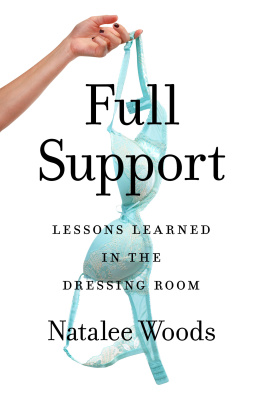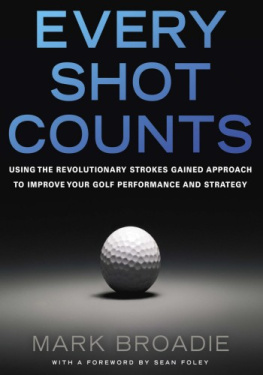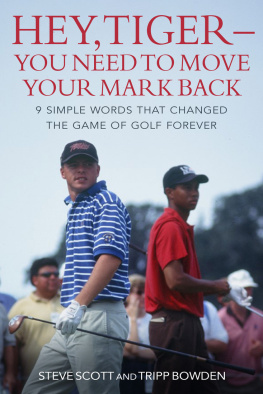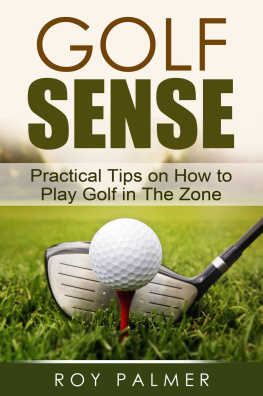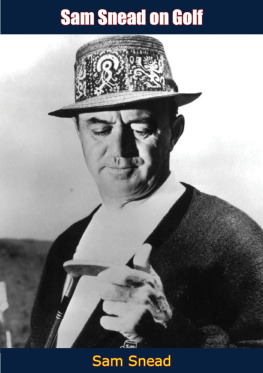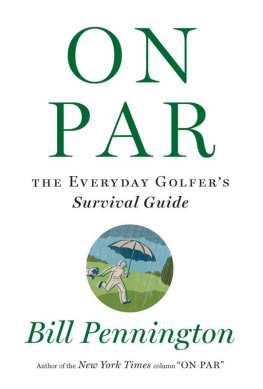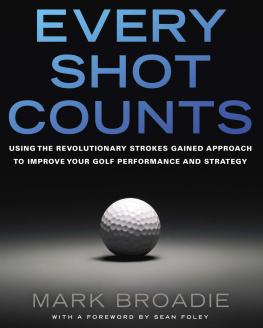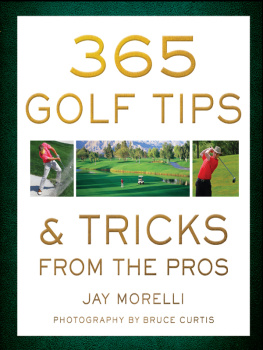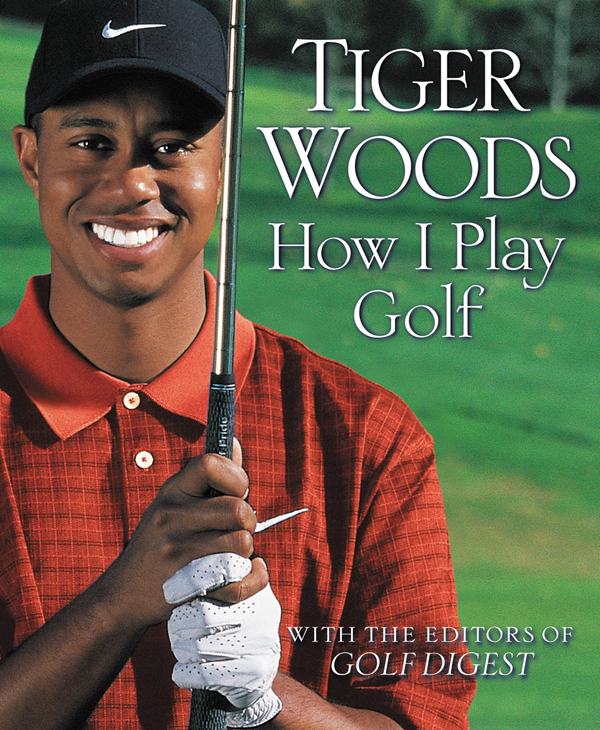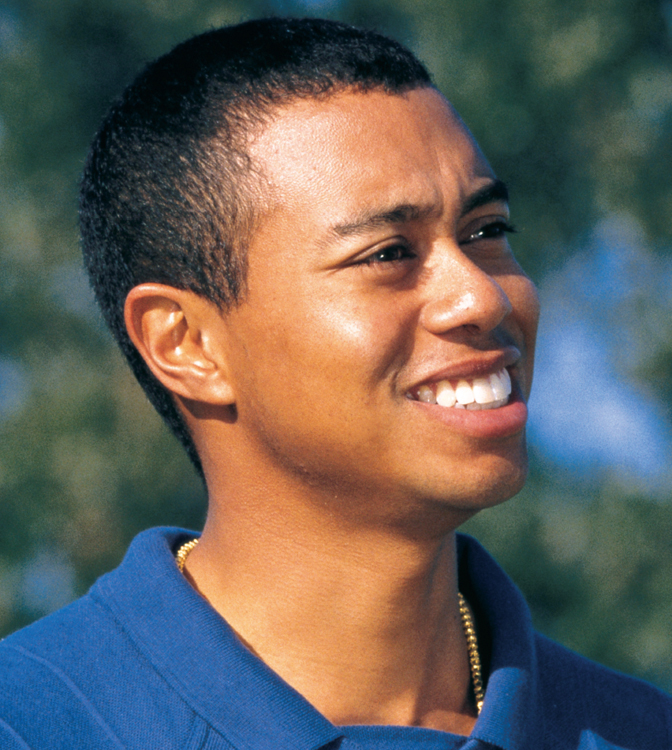
Many thanks to Golf Digest and Warner Books for their collaborative effort in making this project possible.

Also, grateful acknowledgments to my early teachers Rudy Duran and John Anselmo, Jay Brunza, Butch Harmon, who has been my friend and teacher since 1993, Steve Williams, who has been at my side through many tough rounds and great moments, writers Pete McDaniel and Guy Yocom, photographers Dom Furore, Stephen Szurlej and Jim Moriarty, Golf Digest managing editor Roger Schiffman and designer Judy Turziano. On the Warner Books team, my thanks to Larry Kirshbaum, Rick Wolff, Harvey-Jane Kowal, Tom Whatley, Dan Ambrosio, and Antoinette Marotta.
T he 1996 U.S. Amateur at Pumpkin Ridge relates to the way a golfer intent on improving should approach this book. I had just busted a big drive on the par-4 16th hole in my second-round match against Jerry Courville, a very good player from Connecticut. When I got to my ball, I found it had settled into the first cut of rough, about one foot off the fairway. Amid dead silence, I was about to pull a club from my bag when a familiar voice rang out from 50 yards away.

You cant count that as a fairway hit in regulation!
I looked across the fairway and there was my dad, standing under a tree, smiling. Leave it to Pop to yell something like that while I was trying to win a tournament, which at that point was the most important one of my life, going for my third Amateur in a row. It was so much like him, I just shook my head and laughed. Pops calling attention to a detail like that was indicative of the way he raised me. He didnt believe in cutting corners, not in golf or anything else. His approach to achieving a goal was to formulate a game plan and proceed systematically. Along the way, you assessed and reassessed your strengths and weaknesses honestlyif a ball stopped one inch off the fairway, you didnt count it as a fairway hit. That philosophy is the best way to get the most out of this book. Now that youve read it once, read it again. Spend a bit more time on each section and concentrate on mastering the individual points Ive laid out for you. Practice them. Think about them. Dont move ahead until youre able to perform each movement to your satisfaction. It takes some time and effort, but its worth it. What at first appears to be drudgery in golf, turns out to be extremely interesting, fun and rewarding. I love walking onto the practice range with the specific goal of ironing out some swing problem. Im never intimidated by the problem, though I do get frustrated sometimes trying to solve it. I know the answer is out there. I hope this book has helped your game already. Passing my knowledge on to you has been a great pleasure and a privilege.
T IGER W OODS , Autumn 2001
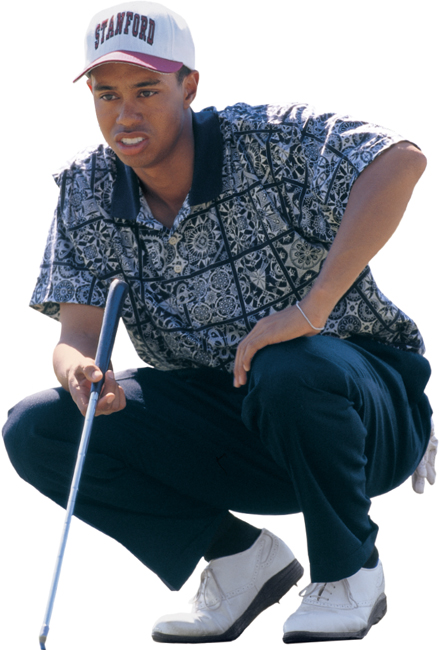
At my first Masters in 1995, while still a student at Stanford, I was in for a surprise on the first green.
I came to my first Masters Tournament in 1995 thinking I could putt. Proud of my hat representing Stanford, where I was completing my freshman year, I was full of confidence. Like a lot of 20-year-olds, I had never seen a putt I didnt like. As a junior and college player, I could go deep when my putter got hot. Id had 21 putts for 18 holes several times, and under pressure it seemed like I never missed. The length of the putt was irrelevant; I would just get up there and bang the ball hard into the hole. I was aggressive, confident and had the touch to back it up.
But I was in for a pretty rude awakening that Thursday at Augusta National. On the first hole on the first day, I stood over a 20-footer for birdie that I just knew I was going to make. It was raining and misty, the kind of conditions that tend to slow the greens down. A little voice told me to give the putt a little extra nudge; the practice green had been a touch slow by Masters standards, and I was determined to play aggressively. So I put a nice smooth stroke on the ball, accelerating the putter a bit faster through impact.
The ball rolled nicely and slowed as it neared the hole. But it didnt stop. It trickled three feet past the hole, paused for a moment, then kept going, gathering speed as it went along. Next thing I knew, the ball had rolled completely off the green. Even then, it didnt stop. Suddenly the gallery was parting to give the ball room to roam. By the time the ball stopped, I was farther from the hole than when I started and facing a very difficult recovery shot. It was a pretty startling moment. Even my playing partner, defending champion Jose Maria Olazabal, looked surprised. Though I was a bit shaken, I was determined to recover. I chipped the ball to 15 feet, and made that putt for a bogey. But right then I knew I had a lot to learn.
The more I examine putting, the more fascinating it becomes. Im at least as captivated by putting as I am by the full swing. Thats why I practice putting so much. I enjoy the process of altering my stroke a little when it gets out of kilter. I like the challenge of improving my touch, and the feeling I sometimes get when I know I can lag a fast, double-breaking 40-footer to within a foot of the holeor else hole it. There is, and always will be, room for improvement. I guess that deep inside, Im still 20 years old and feel I can make every putt I look at. The goal, even if it isnt a realistic one, is to putt my very best every day.
A great way to improve your feel is to putt with your eyes closed. After each putt, try to guess how far the ball rolled. This is the best drill for distance control I know of.
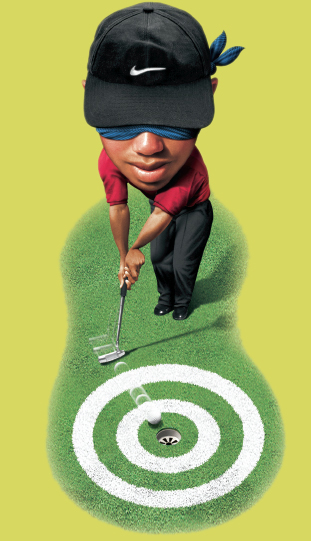
THE ALL-AMERICAN GRIP

I see so many types of putting grips on the pro tours these days, it gives the impression there is no right way to hold the putter. Maybe there isnt. The main thing in putting, whether its with your grip, posture, stance or ball position, is to be comfortable. The putting stroke is not a very complicated action. My hands move only a foot at most in either direction during the stroke. My arms move less than that, my body less still and my head not at all. So the biggest priority in gripping the club is to establish a feeling of sensitivity, comfort and relaxation.
My putting grip is conventional in almost every way. If you look at the long history of the game and its greatest players, most of them have held the club very similarly to the way I do. Im glad I had them as models when I was young.
IF UNIQUE IS WHAT YOU SEEK

T he handle of the putter runs under the butt of my left hand. Most players like the handle running straight up the palm so the club-shaft is parallel to the left forearm. My grip is unique this way, but I believe it gives me a little extra feel and gives me freedom in my wrists when I need it.



